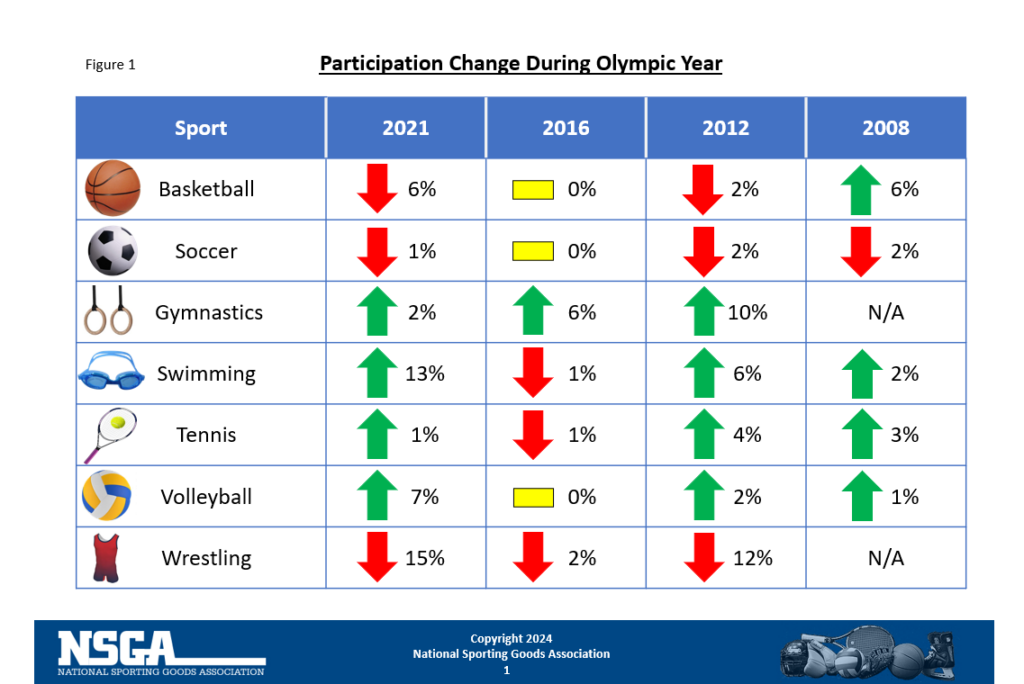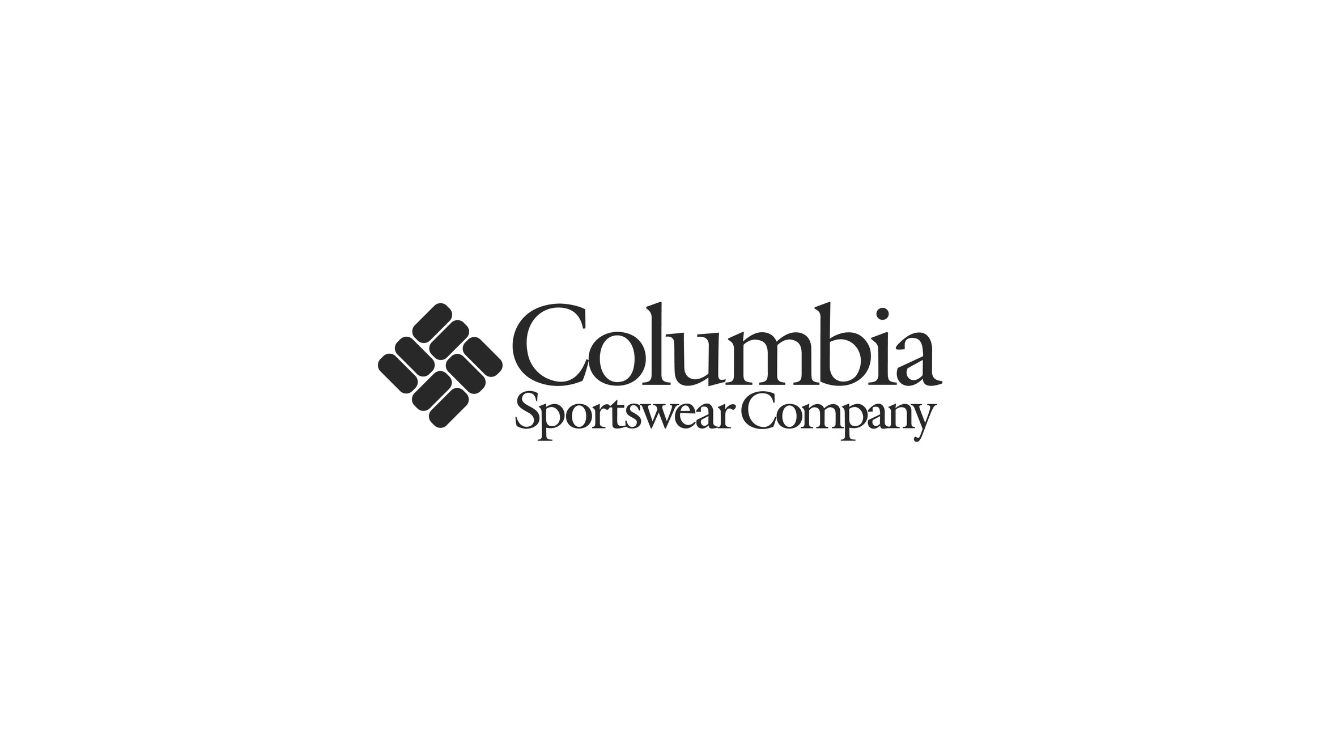By Nick Rigitano
NSGA Director of Insights and Analysis
DOWNERS GROVE, ILLINOIS (July 26, 2024) – Some of the best athletes from the U.S. have gathered in Paris, France for the 30th edition of the Summer Olympic Games (July 26-August 11) in hopes of taking home the gold medal in their respective events. Millions more at home will watch the coverage and root for Team USA.
A subset of those fans will even try to emulate the greatness and athleticism they see on TV in their own backyards, rec leagues or travel tournaments around the country. While the Games are a fantastic opportunity to expose people to a variety of sports and athletic activities and inspire them to participate, more work needs to be done to overcome obstacles hindering first-time participation and sustained growth which would benefit all stakeholders in the industry.
When examining National Sporting Goods Association (NSGA) data on whether participation increased during an Olympic year compared to the previous year (Figure 1 below) in recent history, it is difficult to find trends that support a definitive increase in participation because of the media coverage of and interest in the Olympics. In most cases, participation during Summer Olympic years showed mixed results compared to the prior year. Gymnastics was the only sport that experienced increases during the last three Olympic years, while wrestling was the only sport showing decreases in each Olympic year during the same time frame (neither sport was surveyed in 2008).
When interpreting the chart, it is important to note the changes taking place during 2021 were also influenced by the ripple effects of the ongoing COVID-19 pandemic of 2020. As you might remember, the 2020 Olympics were held in 2021 due to the pandemic. The outbreak led to drastic changes in 2020 for gymnastics and swimming, which then led to some rebound changes in 2021 after the number of cases were reduced and restrictions were lifted.

This is another reminder of the complexities involved in determining causality. In the end, there are many additional variables that affect participation, including individuals’ level of interest in the sport, amount of free time available, affordability of participation, access to leagues/equipment/fields/facilities and increased dedication to other sports.
The exposure the Olympic Games will provide for sports offers a great first step toward increased participation. From there, minimizing barriers to participation, whether real or perceived, will be the key to escorting people further down the path to continued and long-term participation. It will take an industry-wide effort, but the benefits of sustained sports participation will be rewarding for all involved.
For more information on NSGA Research products go to www.nsga.org/research/ or contact NSGA at info@nsga.org.
Topics
Sports Participation Olympics Research Sporting Goods NSGA




 Back
to News
Back
to News
